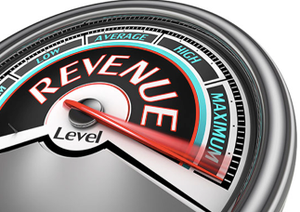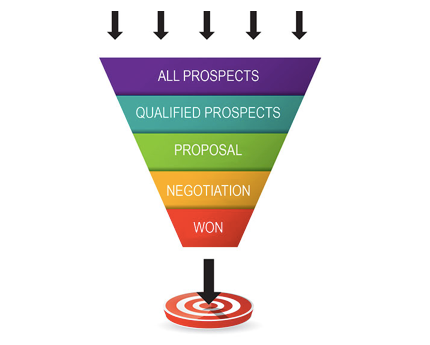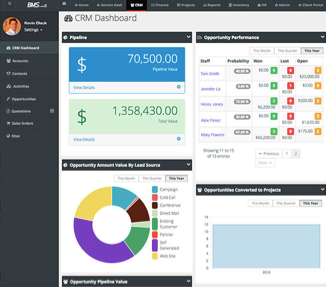Probably the single most important aspect of running a business is sales. Sales are the life-blood of the business: Without sales, you don’t have customers; without customers, you don’t have a business.
October 18, 2016

Sponsored Content
 Probably the single most important aspect of running a business is sales. Sales are the life-blood of the business: Without sales, you don’t have customers; without customers, you don’t have a business.
Probably the single most important aspect of running a business is sales. Sales are the life-blood of the business: Without sales, you don’t have customers; without customers, you don’t have a business.
And it doesn’t matter if you’re talking about a small MSP where the owner wears the sales hat or global MSP with a large international sales team: Selling well depends on having the fundamentals right. Before you pick up the phone and make your first prospecting call, you need to prepare. This means more than going to the prospects’ website and finding out the name of the IT person.
This chapter assumes that you’ve already read the chapter on marketing and demand generation — that you’ve already taken stock of the main customer pains that you address; positioned the benefits and value of your services versus other competitive options; and have created a prospecting and demand generation program to bring prospective clients to your attention. If you haven’t, you might want to workshop through that chapter before reading ahead.
The Power of a Documented Sales Process
The point of creating a documented sales process is the same point as creating any other process, such as a customer onboarding process. By documenting a series of defined steps, you increase the chances that the process routinely results in:
Predictable outcomes – You need to be able to predict how much new and recurring revenue you’ll have next month, next quarter and next year. This type of predictability will enable you to effectively make sound business decisions around staffing requirements, investments in new service offerings, and so forth.
Repeatable activities – Each sales opportunity may be unique, but you can’t afford to create a totally unique sales process for each opportunity.
Scalable process – If you have a set of actions that lead to a predictable set of outcomes, you can confidently hire and train salesperson to be successful.
The Sales Funnel
The flow of potential sales opportunities as they move from an initial prospect to signed client is often referred to as a sales funnel. The funnel is divided into a series of stages. For a prospect to move from one stage to another, the sales person, or the prospect, needs to have completed a defined set of actions or met a defined threshold. At each stage, you can set the likelihood of this deal closing having achieved those actions and thresholds. As you go down the sales funnel, the likelihood of any deal in a particular stage becoming a win should increase.
A typical sales funnel has the following stages:
1. Prospects – At the top of the funnel are leads from your web-based or outbound demand-generation activity. They either show up in your funnel through online registrations or because your sales folks have identified them as likely prospects.
2. Qualified prospects – At this stage, your sales folk need to reach out to the prospects and start the process of qualifying how good the potential for business is at this company. If the prospect came into the funnel through an action on their part, some qualifying questions might have been answered as part of their filling out a form. If the sales person is doing total outbound calling or emailing, it might take more effort to get the prospect to engage in a conversation.
You get to decide the qualifying criteria. It could be quantifiable such as number of devices or employees, having an identified budget for the service or project, or having the willingness to take a meeting. It might be something a bit more qualitative, such as their interest in moving business applications to the cloud. The qualifying questions can vary depending on what service or projects you are trying to sell. Obviously, over time, you might realize some qualifying data isn’t useful in sorting good from poor leads, or vice versa, and you can adjust the criteria accordingly.
Remember, qualifying a prospect out is just as useful as qualifying a prospect in. The less time your sales team spends on leads that are going nowhere fast is more time they can spend on prospects that are might actually sign on the dotted line. In addition, remember that the qualifying stage may need to be broken down into several sub-stages. The point is to identify those criteria that move the process forward and indicate that this opportunity has a higher possibility of closing successfully than it did before.
3. Proposal/presentation. At this stage, you should know almost as much as the prospect about their business as it pertains to the service/project you are selling. You understand the pains they are experiencing with their status quo situation; you have discussed any other competitive options they are considering (including staying with the status quo); you have a handle on the company players and their own personal/business objectives. You have asked questions and really listened to their answers. You are now in the position to go in, layout the roadmap for how you can help, and ask for the business
4. Handling objections. Here is where the rubber meets the road. The conversation has now pivoted from benefits and business gains to cold hard cash. This is when prospects poke holes in your proposal; start to get cold feet about making any changes to their processes; and/or position for negotiation. However, if you have properly handled the qualifying process and established trust with your prospect, you are better able to address these objections.
5. Closing. Some sales people are so focused on “selling” that they may either 1.) forget to ask for the business and close the deal or 2.) not hear the “yes.” No matter where in the sales funnel you are, always be alert to opportunities that could help you close the deal faster than you may have initially thought.
6. Customer follow-up and loyalty programs. The sales process doesn’t really end with a closed deal, of course. You need to ensure that you have the proper processes for appropriately managing client renewals, as well as opportunities for upselling and cross selling your services and offerings.
Sales Pipeline
Sales pipeline is sometimes used interchangeably with sales funnel. In many ways, the terms refer to the same process and have the same end in mind: visibility into prospects that you are currently talking to (including potential new business from existing clients) and an estimate of how likely they will lead to real bookable revenue.
A pipeline workflow (versus a funnel workflow) is more likely to:
Make the salesperson provide an estimate close date for each opportunity they are working on
Prorate the total potential revenues in each stage by their likelihood of closing, and then total these prorated amounts for a pipeline total
Note that this total has to be for a period of time based on the estimated close date
Include renewals as well as new business and upsell/cross sell business
Track the days each prospect individually stays in each stage versus the average prospect in that stage

Customer Relationship Management
Customer relationship management (CRM) is a term that comprises the processes, strategies and technologies used to manage and analyze your interactions throughout a customer lifecycle.
Sales Enablement Tools
As your sales process evolves, you will find that there are some tools that help accelerate a prospect through your sales funnel. Typically, sales tools include services collateral to either hand out in person or attach as PDFs to emails, client case studies, sales and prospecting phone scripts, web content, sample emails, ROI and payback calculators, and templates for proposals and statements of work.
Make sure you can explain the value of your offering very clearly. Have clear leaflets and web pages that outline each of your offerings. If you have tiered service levels (which is recommended), make sure you have a simple price list ready to include with brochures or hand out. (Make sure these are printed on a separate sheet, as prices do change.)
Again, your exact set of sales enablement tools will be unique to your own situation: Your ideal customer, your competitive positioning, the services and projects you are offering, etc.
Track, Track, Report, Analyze and Repeat
You can’t hope to create a predictable, repeatable process without actively managing that process. Again, as with any other aspect of your business, you need to institute ways to track the progress of your overall sales pipeline, as well as each individual sales opportunity.
Sales pipeline meetings–where you and/or your sales team review the overall pipeline to make sure it’s healthy and on track to meet your new revenue projections–should be scheduled at least monthly. Meetings to go into individual sales opportunities should be held more frequently, especially for new salespeople or when your sales team is selling a new service.
In these meetings, identify what the roadblocks are for moving the deals forward and brainstorm on ways to remove these roadblocks. Remember, sometimes the best move is to walk away from a bad prospect. Don’t let the “sunk cost fallacy” (i.e., thinking that you should spend more precious time on a bad bet based on the precious time you’ve already invested in said bet) make you and your sales team spin their wheels with a prospect who is not a good fit for your business or is a perennial “tire kicker.” Another benefit of close tracking is that you can build in expectations of when a particular deal is expected to close (or should close) based on how long it’s been sitting at different stages of the funnel.
While every opportunity will have its own unique characteristics, averages will emerge over time that will be helpful for planning and evaluating sales efforts. For example, you might find that your average deal takes 90 days from initial lead to signed SOW. In addition, you will discover what percentage of new prospects, on average, advance to the Qualifying stage; what percentage of these prospects advance to Presentation/proposal stage; what percentage at this stage typically advance to the Objection handling stage; and, finally, what percentage on average is a successful Closed opportunity.
In addition, write a quick summary after a deal closes to document the main drivers for your success. Consistent review of these summaries can help identify new trends that can help your sales efforts become more efficient.
Equally important is to honestly assess why you lost opportunities so that you can use this insight to improve your sales process. Perhaps you are losing to competitors for a reason you can address, potentially increasing your chances of future success. Perhaps you are losing to “no decision” and should understand if you are 1.) you are not accurately qualifying out prospects who are not good prospects or 2.) not describing the benefits of your services in a compelling enough manner.
CRM Technology
CRM software systems help your sales team become more productive and efficient. A CRM solution should enable you to easily enter new opportunities (both for prospective and existing clients) and the company details and contact information for the employees of that company, as well as track all activities pertaining to that opportunity. You can define the stages of your sales funnel (or pipeline) and assign the probability of a successful close at each stage.
Reports on overall pipeline–by sales team member or division, by service offering, and more–can now be easily shared and reviewed, and will always reflect the latest information.
As importantly, your CRM system allows for a simple, clean hand-off of all pertinent details to the rest of your organization once the deal is closed. This hand-off allows for a seamless transition from the client’s point of view as it moves to the part of your organization that will deliver the goods and services. Project management, service desk and ticketing, and billing and finance should automatically get all the information they need to do their jobs in relation to this new engagement.
Next Steps
Kaseya BMS is a next-generation business management solution that was built specifically to help MSPs spend more time selling and delivering services, and less time on non-revenue-generating tasks like billing and project management.
With BMS, you can maximize your relationships with customers and prospects by keeping track of current accounts, new revenue possibilities, and all past communications in one simple-to-use system that’s typically one-third the cost of other PSAs.
Learn more and sign up for a free BMS trial!
Joining Kaseya in 2012, Miguel Lopez brings over 20 years of experience to his role as SVP, Managed Service Providers (MSPs). In this position, he consults daily with MSPs to help them solve their clients’ business problems with technology solutions. Prior to joining Kaseya, Miguel served as the director of consulting services for All Covered, a nationwide technology services company that is a division of Konica Minolta Business Solutions USA Inc. In 2008, All Covered acquired NetCor Technologies, a leading MSP that Miguel founded and managed since 1997. NetCor specialized in serving highly regulated industries such as healthcare, CPAs, law firms and retail companies.
Guest blogs such as this one are published monthly and are part of MSPmentor’s annual platinum sponsorship.
You May Also Like
